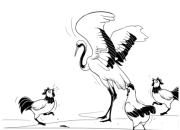高一英语必修1friendship课件
时间:2021-08-31英语,属于印欧语系中日耳曼语族下的西日耳曼语支,是由古代从丹麦等斯堪的纳维亚半岛以及德国、荷兰及周边移民至不列颠群岛的盎格鲁、撒克逊和朱特部落的日耳曼人所说的'语言演变而来,并通过英国的殖民活动传播到了世界各地。下面是小编为你带来的高一英语必修1friendship课件 ,欢迎阅读。
Teaching Aims:
1. 能力目标:
a. Listening: get information and views from the listening material.
b. Speaking: express one's attitude or views about friends and friendship in appropriate words.
c. Reading: enable Ss to get the main idea and be familiar with reading skills.
d. Writing: write some advice about making friends as an editor.
2. 知识目标:
a. Talk about friends and friendship; how to make friends; how to maintain friendship.
b. Use the following expressions:
I think so. / I don't think so.
I agree. / I don't agree.
That's correct.
Of course not.
Exactly.
I'm afraid not...
c. Enable Ss to master Direct Speech and Indirect Speech.
d. Vocabulary:
add point upset calm concern careless loose cheat reason list share feeling thought German series outdoors crazy moonlight suppose dare thunder entirely power according trust indoors suffer teenager advice quiz editor communicate situation habit
add up calm down have got to be concerned about walk the dog go through hide away set down a series of on purpose in order to face to face according to get along with fall in love join in
3. 情感目标:
a. Arose Ss' interest in learning English
b. Encourage Ss to be active in the activities and make Ss be confident
c. Develop the ability to cooperate with others.
4. 策略目标:
a. Develop Ss' cognitive strategy: taking notes while listening.
b. Develop Ss' communicative strategy.
5. 文化目标:
a. Enable Ss to get to know different opinions about making friends from different countries.
Teaching design:
Period 1 Warming-up 1课时
I. Teaching objectives:
1. Have Ss learn how to describe their friends and friendship with new phrases and structures.
2. Have Ss learn to solve problems that may occur between friends.
3. Cultivate Ss to form the good habit of learning English in Senior Middle School.
II. Teaching important points:
1. Use the given adjs. and sentences structures to describe one of your friends.
2. Learn to evaluate friends and friendship.
III. Teaching difficult points:
1. Work together with partners and describe one of your good friends.
2. Discuss with partners and find out ways to solve the problems.
IV. Teaching procedures:
Step 1. Lead-in and warming-up
Before the lesson, T can arose Ss' interests by introducing oneself and get Ss to talk about their summer holidays, or whether they had made friends during holidays.
Free Talk: 3 mins
1. How did you spend your summer holidays? How did you feel? What did you do?
2. What do you think of your new school? Do you like it? Could you say anything about it?
3. Do you like making friends? How do you get in touch with your friends? Do you have many friends? Where are they now? Do you have any old friends in our school?
Step II. Think it over
1. Give a brief description of one of T's friends. The following phrases and structures may be useful: (3mins)
His / Her name is...
He / She is...years old.
He / She likes .... and ...dislikes...
He / She is very kind / friendly / humorous...
When / Where we got to know each other...
Step III. Make a survey
1. List some qualities of a good friend or your ideal friend, have Ss get into groups of 4 to 5 to find out what each one has listed?
2. Add up the scores Ss got and show the explanations of every type.
3. Have Ss tell their partners the standards of good friends with the following structures:
I think a good friend should (not) be...
In my opinion. From my point of view. So far as I'm concerned. I suppose. A good friend is someone who...
Step IV. Talking and sharing (working in pairs)
1. If your best friend does anything wrong, what will you do?
What to do? | Reasons |
...... | ...... |
...... | ...... |
2. Proverbs: "What is a friend?"
A British newspaper once offered a prize for the best definition of a friend. If Ss were the editors, they could choose the best one from the following entires, and explain why.
"A friend in need is a friend indeed."
"Friends are like wine, the older, the better."
"A friend is a second self."
"A friend to all is a friend to none."
Step V. Homework
1. Write a short passage about your best friend.
2. Review the language points.
3. Preview the new words and expressions.











